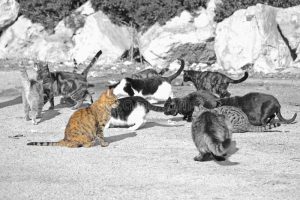For many people, big cats are one of the most beautiful animals on Earth. So when you hear about a big cat being killed in some way, you may feel upset and even guilty. But before you go crazy worrying about these animals and what you can do to help, it’s important to remember that lions, tigers, leopards, and other big cats are wild animals and should be treated as such. This blog post will outline the 10 biggest wild cats mistakes you can easily avoid having a more positive relationship with these animals. From not feeding them to making loud noises near their habitats, read on to learn how to protect these beautiful creatures without harming them.
Make sure you have the right gear.
If you’re heading out into the wilderness to photograph wildcats, it’s influential to be well-prepared. Here are five of the biggest gear mistakes you can make:
1. Need a sturdy camera body. A great camera doesn’t do you any good if it falls victim to a fall or attack from a wildcat. Make sure your camera is durable and can withstand falls and bumps in the field.
2. We need to pack adequate lenses. If you want to take amazing wildlife photos, don’t forget your zoom lens! Wildcats are often quite close, so a lens that can stretch out far will come in handy when capturing those elusive moments.
3. Forgetting the right batteries. Most digital cameras now require batteries, so bring plenty with you on your trip!
4. Packing the wrong clothes. Wearing clothes that are too light or sheer could give you away as a human observer and scare away the cats instead of attracting them like clothing made from natural materials would.
5. Not being prepared for extreme temperatures. Many photographers mistakenly think that because they’re shooting in nature, the weather won’t be as cold as it might be back home—but that’s not always true! Make sure you have layers for when things get cold, and bring some extra warm clothes, too!

Make sure you are observing the right protocols.
1. Always take the time to research a wild cat before you visit it to avoid any potential mistakes.
2. Make sure you have the right gear and permits to observe the animal safely and legally.
3. Never approach or touch a wild cat without getting its permission, as this could lead to injury or even death.
4. Never feed or offer water to a wild cat, as this could encourage unwanted behavior and increase the chance of human-wildcat conflicts.
Do not try to handle big cats on your own
It is important to remember that these animals are wild and can be unpredictable when it comes to big cats like lions, tigers, and leopards. It is also influential to avoid trying to handle these animals alone. If you are in danger of being attacked by a big cat, do not resist and remain as calm as possible. You should call 911 or the police immediately.
Do not feed them human food.
There are plenty of wild cats in the world, and while many live peacefully alongside humans, there are still some who can be dangerous. One of the most common mistakes people make around these big cats is feeding them human food. This isn’t only a dangerous habit for the cat itself and can lead to conflicts between people and wildlife.
Instead, give your wild cat something nutritious and natural, like fresh meat or bird food. If you’re going to handle your cat, make sure you do it in a way that’s safe for both of you. And if you do happen to feed a wild animal, always be mindful of its surroundings and keep an eye out for any possible dangers.
Do not approach them from behind.
1. Do not approach them from behind! This is one of the biggest mistakes you can easily avoid when encountering a wild cat. Wild cats are predatory animals and view any interaction from behind as a threat. They may become agitated and attack if frightened or angered.
2. If you must approach a wild cat from close range, try to do so slowly and calmly. Speak in a low voice, make eye contact, and keep your hands at your sides. Avoid sudden movements or loud noises; these could trigger an attack.
3. If you encounter a wild cat, stand your ground and tell it that you are not a threat. If it backs away or shows signs of aggression, uses whatever means necessary to defend yourself: call for help, grab onto its fur, or push it away with physical force. Remember: never attempt to pet or handle a wild cat without proper training and authority from an authoritative source such as a conservation biologist or park ranger
Always keep a safe distance from them.
Keep a safe distance if ever in a wild animal’s presence. Many people make the mistake of getting too close to these animals, which can lead to dangerous situations. Wild animals can be unpredictable and dangerous, so it’s important to stay away from them if possible.
If you need to get close to a wild animal, do so slowly and cautiously. Never approach a wild animal from behind or from the side, and always keep your eyes open for any signs of aggression. If a wild animal starts to attack or show any other signs of hostility, back away immediately and call for help.
Use the correct language when speaking to them.
When speaking to big cats, always use the proper language. If you need to become more familiar with their names, do your research before encountering them. When interacting with these animals, be aware of your surroundings and maintain a calm demeanor. Keep any food or toys away from the animal, and never approach them from behind or the side. Respect their space and never touch them without first asking permission.
Educate yourself about the big cats you are trying to study.
When studying big cats, it’s important to research and educate yourself about the animals you are trying to study. Here are some common mistakes people make when studying big cats:
1. Not knowing enough about big cat habitats.
Understanding where big cats live, and they hunt, is essential if you want to get close to these magnificent creatures. Make sure you know the specific habitat requirements of each species before embarking on any study missions.
2. Not familiarizing yourself with the prey these cats hunt.
Big cats rely heavily on their diet, so knowing exactly what they eat is critical for understanding their behavior and ecology. Before taking on a study project, familiarize yourself with the anatomy and physiology of different prey types. This will help you understand why a particular animal might be of interest to a pride of lions or tigers.
3. Ignorance about cameras and field equipment that can injure or kill big cats.
Studying big cats from a distance is one thing, but getting close can be dangerous – especially if you’re using camera traps or conducting observational studies in sensitive areas like protected reserves or National Parks. Make sure you are fully aware of the risks associated with observing wildlife before starting your project!

Remember that these animals are wild and dangerous and should be treated.
If you’re planning to visit any big wild cats in Africa, remember that these animals are wild and dangerous and should be treated as such. Here are four mistakes you can easily avoid if you want to have a safe and enjoyable experience:
1) Not respecting their territory: A lion’s territory can be quite large, so it’s important not to wander into its area without permission. If you see a lion from a distance, always stop and watch from a safe distance until the animal walks away.
2) Not staying calm: One of the most indispensable things when encountering big wild cats is to remain calm. If you start behaving nervously or making too much noise, the cat will likely become fearful and may attack.
3) Not feeding them: Big wild cats depend on food to survive, so you must give them some if you encounter them. Feeding them with bait (like grapes or chicken parts) will often work better than hand-feeding them because they won’t associate human beings with food.
4) Creating a disturbance: Big wildcats generally do not like people making too much noise or disturbing their habitat. If you’re travelling in an area where lions live, be aware of your surroundings at all times and stay as quiet as possible.

